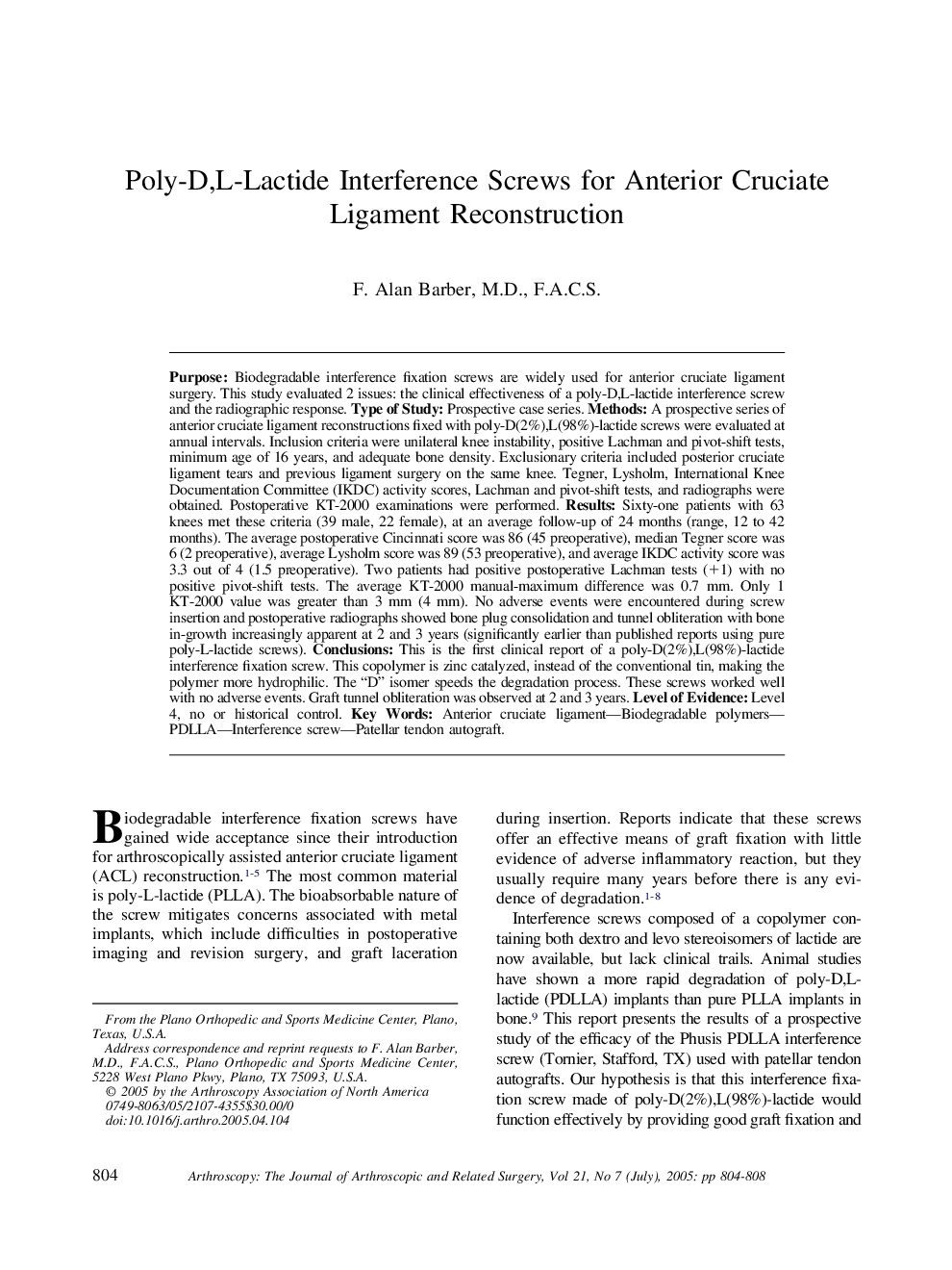| کد مقاله | کد نشریه | سال انتشار | مقاله انگلیسی | نسخه تمام متن |
|---|---|---|---|---|
| 10078945 | 1603621 | 2005 | 5 صفحه PDF | دانلود رایگان |
عنوان انگلیسی مقاله ISI
Poly-D,L-Lactide Interference Screws for Anterior Cruciate Ligament Reconstruction
دانلود مقاله + سفارش ترجمه
دانلود مقاله ISI انگلیسی
رایگان برای ایرانیان
کلمات کلیدی
موضوعات مرتبط
علوم پزشکی و سلامت
پزشکی و دندانپزشکی
ارتوپدی، پزشکی ورزشی و توانبخشی
پیش نمایش صفحه اول مقاله

چکیده انگلیسی
Purpose: Biodegradable interference fixation screws are widely used for anterior cruciate ligament surgery. This study evaluated 2 issues: the clinical effectiveness of a poly-D,L-lactide interference screw and the radiographic response. Type of Study: Prospective case series. Methods: A prospective series of anterior cruciate ligament reconstructions fixed with poly-D(2%),L(98%)-lactide screws were evaluated at annual intervals. Inclusion criteria were unilateral knee instability, positive Lachman and pivot-shift tests, minimum age of 16 years, and adequate bone density. Exclusionary criteria included posterior cruciate ligament tears and previous ligament surgery on the same knee. Tegner, Lysholm, International Knee Documentation Committee (IKDC) activity scores, Lachman and pivot-shift tests, and radiographs were obtained. Postoperative KT-2000 examinations were performed. Results: Sixty-one patients with 63 knees met these criteria (39 male, 22 female), at an average follow-up of 24 months (range, 12 to 42 months). The average postoperative Cincinnati score was 86 (45 preoperative), median Tegner score was 6 (2 preoperative), average Lysholm score was 89 (53 preoperative), and average IKDC activity score was 3.3 out of 4 (1.5 preoperative). Two patients had positive postoperative Lachman tests (+1) with no positive pivot-shift tests. The average KT-2000 manual-maximum difference was 0.7 mm. Only 1 KT-2000 value was greater than 3 mm (4 mm). No adverse events were encountered during screw insertion and postoperative radiographs showed bone plug consolidation and tunnel obliteration with bone in-growth increasingly apparent at 2 and 3 years (significantly earlier than published reports using pure poly-L-lactide screws). Conclusions: This is the first clinical report of a poly-D(2%),L(98%)-lactide interference fixation screw. This copolymer is zinc catalyzed, instead of the conventional tin, making the polymer more hydrophilic. The “D” isomer speeds the degradation process. These screws worked well with no adverse events. Graft tunnel obliteration was observed at 2 and 3 years. Level of Evidence: Level 4, no or historical control.
ناشر
Database: Elsevier - ScienceDirect (ساینس دایرکت)
Journal: Arthroscopy: The Journal of Arthroscopic & Related Surgery - Volume 21, Issue 7, July 2005, Pages 804-808
Journal: Arthroscopy: The Journal of Arthroscopic & Related Surgery - Volume 21, Issue 7, July 2005, Pages 804-808
نویسندگان
F. Alan (F.A.C.S.),